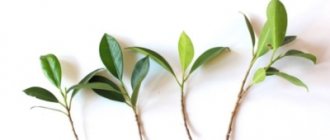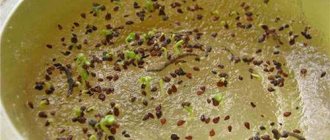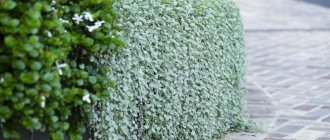Description of the plant and its photo
Impatiens is an ornamental flowering plant that can be grown indoors, on a balcony, veranda or in the yard. Depending on the variety, the plant can be herbaceous or subshrub. Initially, balsam grew in the tropics; the supposed homeland of this flower is the island of Zanzibar. The flower appeared in Europe at the end of the sixteenth century, where cultivated varieties of balsam were bred.
With proper care, balsam blooms almost all year round. The flowers of the plant are large and bright, most often red, but pink, yellow, orange, white, and burgundy are also found. There are varieties with two-color flowers, i.e., a contrasting “eye” in the center of the flower. The leaves are usually dark green, sometimes burgundy or variegated.
Advice! The plant is moisture-loving and requires regular, frequent watering, especially in the warm season. In summer, the balsam should not be exposed to scorching sunlight; it is necessary to shade the plant. In winter, it is not recommended to heavily moisten the soil to avoid hypothermia. Drafts are also detrimental to the flower.
Impatiens do not need to create additional conditions; this flower feels great at the temperature and humidity of an ordinary living space.
Look at the photo of what the balsam looks like:
Trimming / Support / Garter
Indoor impatiens are pruned in early spring. If it has grown greatly, its branches are cut in half. And when the flower is compact and does not require drastic changes, the tops of the shoots are pinched to form a lush bush. Dying flowers, leaves and bare shoots are removed.
Thanks to pruning, the impatiens will rejuvenate and bloom more profusely. And cut shoots are used for propagation.
It is recommended to carry out pruning in several stages. This will help the plant avoid too much stress and start growing faster.
Throughout the year, you can also trim off weak shoots that thicken and grow inside the bush.
Thanks to pruning, the balsam becomes thick and lush, its decorative qualities increase, flowering becomes more abundant, and the flowers become larger. The life of the plant is extended.
When properly formed and pruned, balsam does not need support. However, if the bush has grown too large, it may need support to prevent the pot from tipping over.
Planting seeds and cuttings
Planting balsam is done in two ways:
- Cuttings.
It is considered a simpler way to plant a plant and is recommended for beginning gardeners who want to preserve the quality of the variety. For planting, cuttings obtained after spring pruning of the plant are used. The cut shoot is placed in water until roots appear, this happens after about 2 weeks.After this, the sprout is planted in sand or a substrate prepared from a mixture of peat and perlite in a 2:1 ratio. When the flower gets stronger, it is transplanted into a larger container with regular soil for adult plants.
- Planting seeds.
Used by experienced gardeners and, as a rule, for growing garden varieties. However, it can also be used for indoor plants. It is important to remember that balsam grown from seeds may not have the characteristics of the selected variety. For planting, seeds are placed on the surface of the substrate.It is allowed to slightly deepen the seed, but it is not advisable to sprinkle it on top. After this, the container is covered with film or a glass cap. After about 10 days, sprouts with two leaves appear. This means that the seedlings can be transplanted into separate pots.
You will learn all the details of plant propagation by cuttings and seeds by reading this article.
Replanting an indoor flower
It is necessary to replant balsam in order to replace the old depleted soil with new and nutritious soil, as well as to provide additional space for root growth.
At the same time , it is important to remember that some crowding is even beneficial for this flower , since balsam flowering occurs only after the root system fills the space of the pot. If the container is too large, all the energy and nutrients of the balsam will go to the development of roots, and not to flowering.
Transplantation is carried out once a year - in spring, or twice a year - in spring and autumn, depending on the intensity of flower growth. It is also necessary to replant a plant purchased in a store 2 weeks after purchase - this is the time the plant needs to adapt to new conditions. Read about the intricacies of transplanting balsam and its subsequent care here.
Refusal to form
The tender shoots of balsams do not require any complicated pruning techniques and will tell you how best to keep them in shape. Simply pinching the shoots is a measure that is often abandoned, pinching the tops only of seedlings and young cuttings.
In order for balsams to remain compact for a long time, to bush tirelessly, and therefore to bloom tirelessly, you need to pinch every new shoot on the plant, even the side branches. The central shoot is limited in growth by pruning. Formation is carried out throughout the entire period of active growing season.
If the balsam has become deformed or has begun to bloom sparingly, and you do not have the right conditions for wintering, it is better to propagate the bushes and grow a replacement from cuttings. Balsam propagates amazingly easily. Cuttings can be rooted simply in water. In this simple way, all year round you can replace any balsams that have suffered from improper care with new bushes, planting them in a small group.
Required soil
This flower requires loose soil with low acidity. An excess of nutrients in the soil is not desirable, as it will lead to the growth of green mass and weak flowering. In a specialized store you can purchase an earthen mixture for flowering plants, or prepare the soil yourself:
- The first option for homemade soil is a mixture of leaf soil, turf, humus, sand and peat in a ratio of 2:2:2:2:1.
- A mixture of leaf soil with peat and river sand (2:1:1) is also used. It is important to remember that all components taken from the street must be disinfected.
Reference! Despite the fact that balsam is very moisture-loving, a thin layer of drainage in the pot is still very desirable. They can serve as small pebbles or pebbles, laid in a layer of no more than 2-3 cm.
How to properly care?
Watering
It is extremely important for balsam to receive sufficient moisture. In summer, the flower needs abundant watering, daily or every other day, depending on how quickly the top layer of soil in the pot dries out. Under no circumstances should the soil be allowed to dry out.
In winter, watering is reduced, especially if the plant is in a cool room. Usually, in the cold season, 2 waterings per week are enough for balsam.
Can I spray with water?
Spraying can be carried out if the air in the room is warm and dry. In addition to additional hydration, this procedure serves as a prevention against the appearance of spider mites. Impatiens should be sprayed once every 2-3 days.
After spraying, it is necessary to keep the plant in the shade, since bright sunlight can burn wet leaves.
It is also important to avoid drafts to avoid hypothermia. For the same reason, it is not recommended to spray balsam in winter.
Top dressing
During flowering, balsam requires feeding. Fertilizer should be applied once every 10 days from the beginning of spring to autumn, until the plant enters a dormant period, alternating nitrogen and phosphorus fertilizing. Among organic fertilizers, the main source of nitrogen is bone meal, and phosphorus is wormwood compost.
Nitrogen is necessary for balsam for the successful development of green mass, and phosphorus promotes high-quality flowering. Read about how to properly water and what to feed the plant for abundant flowering here.
How to pinch?
To improve flowering and form a neat bush, in the spring it is necessary to pinch out the balsam, i.e., remove the upper part of the shoot.
Along with pinching, damaged leaves and wilted flowers are usually removed. Thanks to this, the flower maintains a neat appearance, and also reduces the risk of certain diseases and pests.
It is important to remember: pinching is not required for dwarf varieties of balsam.
Trimming
How to prune a plant correctly and when should it be done? Pruning is carried out in March, and young shoots of balsam are cut off, which can be used to propagate the flower. During pruning and pinching, it is necessary to increase watering so that the plant can more easily endure the painful procedures.
How to preserve in winter?
In order for a flower to develop well and bloom actively in the warm season, in winter it is necessary to provide it with a period of rest. This will help the plant rest and gain strength for spring. Receiving less sunlight, balsam can shed its leaves. If proper care is taken, this phenomenon is not a cause for concern.
Lowering the temperature in winter is a desirable, but not necessary condition for balsam. If the plant is placed in cooler conditions during wintering, then you need to remember that the indicator should not be lower than +16 degrees. Watering is gradually reduced from daily to once every 3-4 days.
Accumulation of water in the pan is not allowed. Fertilizers are excluded completely or applied no more than once a month. Nitrogen and phosphorus fertilizers should be replaced with potassium-phosphorus fertilizers.
We wrote in more detail about growing and caring for balsam at home in a separate article.
Caring for balsam in winter: lighting
Balsam does not welcome bright sunlight; it prefers somewhat diffused light. However, lack of light also negatively affects the culture. Elongated shoots with small leaves silently indicate the paucity of lighting. When the flowerpot is placed on a windowsill in winter, the pot sometimes needs to be rotated, providing light to all shoots.
When installing phytolamps or fluorescent lamps, proper watering, fertilizing and maintaining a temperature of +25 °C, flowering can continue in winter - removing the dormant period.
Possible problems
When growing indoor balsam, you may encounter the following problems:
- The plant does not bloom, in most cases, due to unfavorable factors. Typically, flowering does not occur if the balsam is planted in a pot that is too large, does not receive enough water, or due to excess nitrogen, which it receives from fertilizers.
- Yellowing of the leaves is a signal of a lack of moisture in the soil. In addition, the leaves may turn yellow as a result of a burn if the flower is located in direct sunlight. In winter, this sign indicates hypothermia of the balsam.
Partners
Experienced flower growers have noticed that wet Roly does not like being cramped on the windowsill and proximity to other plants is undesirable for it.
When there is insufficient light, it begins to shed its leaves. On the site, the plant is best placed under the canopy of trees that provide good shade.
Balsam is very unpretentious in care and maintenance. Even an inexperienced gardener can cope with growing Rolyflower, knowing its love for moisture and light. By following these simple rules, you have the opportunity to enjoy the beauty of the plant for a long period.
Also watch a video on the topic:
Diseases and pests
Like many other indoor plants, balsam is susceptible to attack by pests and diseases. The following are considered the most common for this flower:
- The whitefly is an insect dangerous to balsam, appearing in a dry, damp room that does not receive fresh air.
Important! For prevention, regular spraying and ventilation of the room with flowers is necessary. To get rid of whiteflies that have already appeared, use insect repellent tape. - Spider mite - feeds on the sap of balsam leaves, which causes the leaves to wither and curl. It appears, like the whitefly, when the flower is kept in the wrong conditions. Maintaining air humidity and good ventilation will help prevent the appearance of such a pest.
- Soil mold - occurs when there is excess moisture. Despite the fact that balsam is a moisture-loving plant, it is important to ensure that the soil does not sour. If the top part of the soil is still covered with mold, it is necessary to remove the affected layer of soil and fill in a new one.
No spraying
Maintaining stable and sufficiently high soil moisture is often regarded as the only thing this plant needs. But the humidity of the substrate does not in any way reduce the love of balsams for moist air. Of course, there is no need to install special humidifiers for indoor balsams. But they react so positively to spraying that it is not worth excluding them from care.
Impatiens are sprayed only with warm water; if the plant blooms, spray it carefully and only on the leaves. You need to make sure that drops of water do not fall on the buds and petals. Impatiens will not refuse periodic warm showers, especially at the stage of active growth before flowering or during the heat.











